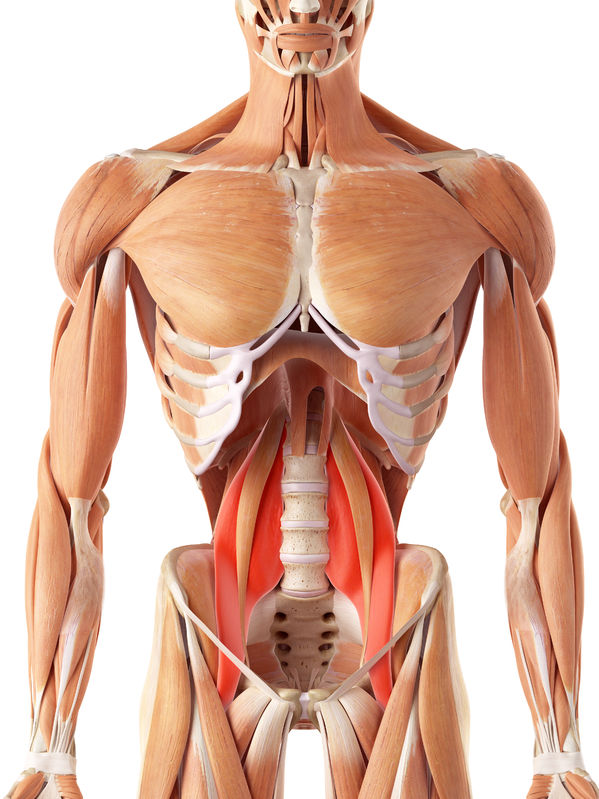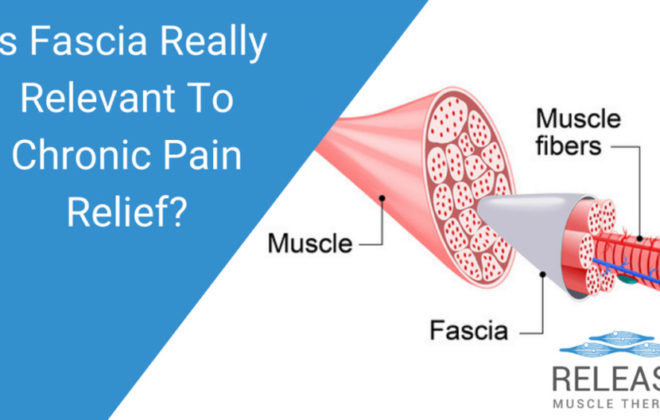6 Step Guide to Releasing a Tight Psoas Muscle
The psoas muscle (also known as the iliopsoas) plays an important role in spinal stabilization and hip flexion. However, chronic tightness in the psoas can lead to low back and hip pain. Releasing the psoas requires a comprehensive approach to address the muscle itself as well as contributing factors.
In this guide, we will cover the key steps to releasing a tight psoas muscle:
- Assessing psoas and hip flexor tension
- Ruling out underlying issues
- Stretching the psoas
- Psoas release massage techniques
- Releasing other hip flexors
- Activating glutes and hamstrings
Read on for details on each step. And be sure to check out our dedicated posts that dive deep into psoas tests, stretches, and release techniques.

Key Takeaways:
- Properly assessing hip flexor tension is essential before assuming the psoas muscle is tight. The Thomas Test is commonly used to evaluate hip flexor length.
- Rule out underlying pathology, such as hip joint or lumbar spine issues, before focusing on psoas release techniques.
- Stretching the psoas involves reversing its action by side-bending the spine away from the side of the stretch.
- Neuromuscular techniques like reciprocal inhibition and post isometric relaxation can enhance the effectiveness of psoas release.
- Manual therapy, such as massage techniques, can help address chronic tightness in the psoas muscle.
- Additional hip flexor muscles, such as the rectus femoris and tensor fascia latae, should also be addressed to reduce overall hip flexor tension.
- Facilitating the opposite muscles, particularly the hip extensors, can help relax the tight hip flexors and improve range of motion.
- If all steps have been followed and tightness persists, consider seeking manual therapy or addressing other underlying issues that may be contributing to the tension, and be sure to include psoas strengthening exercises.
Step 1: Assess True Psoas and Hip Flexor Tension
Everyday I see people that have been told their iliopsoas muscle is tight, and its causing all their problems. However, most of these people have never actually had their hip flexors assessed for tightness.
Just because someone looks like their pelvis has a bit of increased anterior pelvic tilt does not automatically mean the psoas major is tight.
The “feeling of tightness” or tension isn’t the same as actually having a positive hip flexor tension test. This is why it needs to be assessed properly, and additional psoas myths need to be eliminated.
Thomas Test
The Thomas Test is best way to measure hip flexor length and is commonly performed by physical therapists. It not only tests psoas muscle tension, but also the other hip flexors including the rectus femoris, sartorius, and even the tensor fascia latae (TFL).
Since the psoas connects the lumbar vertebrae to the thigh bone (lesser trochanter), it has an important stabilization function for the lumbar spine, but also acts as a hip flexor.
To perform the Thomas Test, sit at the edge of a massage table (or bed if you don’t have access to a table), and bring one knee toward your chest.
The goal here is to have enough hip flexion to get a slight posterior pelvic tilt so that your lower back is flat on the table.
The opposite leg is allowed to hang fully in order to assess the degree of hip flexion.
There are a few primary things we are looking for here:
- The thigh should rest at least parallel to the floor (optimally about 10 degrees below parallel indicating the psoas muscle has adequate length)
- There is no hip pain or knee pain in this position, only a feeling of a upper thigh area or psoas stretch (pain may indicate an underlying hip joint condition)
- From the front or top view, the upper thigh should not be excessively externally or internally rotated (this may indicate tightness in the TFL and/or psoas if combined with #1)
- The knee is bent near 90 degrees (if more than 90 degrees it indicates tightness of the rectus femoris, which is a quadricep muscle that is responsible for hip flexion)
Here is a video to walk you through this process:
Check out our complete visual guide to properly performing the Thomas Test.
If you find that you pass the above test, then you may be feeling tension/overactivity in your psoas muscle vs it actually being tight. Odds are likely you need on the other hip flexors in this case!
Step 2: Rule Out Underlying Pathology
Before moving on to psoas release techniques or aggressively stretching the hip flexors with the intention of getting pain relief, its important to rule out any underlying causes for psoas muscle tension, especially in the presence of chronic pain or guarding.
Guarding and tension may simply be a way the nervous system is trying to protect things.
Hip joint pathology can be a source of hip pain, and the psoas major is a protector for this region. For example, the psoas muscle may reflexively spasm to guard a labral tear.
Potential Reasons For Psoas Major Tension
- Hip joint pathology
- Lumbar spine and/or SI Joint pathology
- Muscular imbalance elsewhere in the body (resulting in compensation pattern)
- Nerve entrapment or irritation
Learn all about the potential reasons for psoas tightness and when you should see a doctor.
Step 3: Stretch The Psoas Muscle
A simple search online will turn up about a dozen different varieties of psoas stretch options. While some are creative and interesting, this muscle isn’t complicated to stretch.
To stretch any muscle, we determine which actions occur when it contracts, and simply reverse it. In the cases of the iliopsoas muscle, when the spine is in neutral, it produces hip flexion.
There are some conflicting views on the contribution of the psoas to rotation of the hip, but it is not that influential in this role. (not enough to spend time doing super duper specific little tweaks in order to get at every little fraction of the fibers anyway!)
We can, however have an influence on the degree of stretch by changing the position of the spine. By side-bending the spine AWAY from the side of the psoas stretch, we can add a little extra bonus to the lengthening of the psoas.
Here is a simple way to accomplish the psoas muscle stretch:
Neuromuscular Techniques For The Psoas Muscle
Beyond basic stretching, we can add what is referred to as neuromuscular release techniques to improve the outcome of our work.
These techniques work on simple principles of the central nervous system. The two techniques I use the most are reciprocal inhibition (RI) and post isometric relaxation (PIR).
Psoas Release Technique – Reciprocal Inhibition
Reciprocal inhibition (RI) technique involves contracting the muscles on the opposite side of the muscle that is lengthened/stretching. In this case, the muscles working on the opposite side of the iliopsoas are the glutes and hamstrings.
This technique is excellent for restoring mind-to-muscle connection in the opposing muscles, as well as improving coordination and strength at the new range of motion after a tight iliopsoas is released.
Psoas Release Technique – Post Isometric Relaxation
Post isometric relaxation (PIR) is a technique that involves a low-intensity contraction of a muscle for a short duration, immediately followed by a stretch.
When this technique is used for hip flexor stretching on a massage table, you can take advantage of gravity for the activation of the muscle (lifting up) and also assistance during the stretch phase.
Step 4: Psoas Release Massage Techniques
Manual therapy techniques are often very helpful for stubborn psoas major chronic tightness issues. Trained massage therapists often offer these techniques, and they should be only be carried out by a careful professional.
While the majority of the psoas is generally inaccessible via direct palpation, it can be contacted at the lesser trochanter attachment point, and influenced through the superficial tissues in the abdomen, just to the side of the rectus abdominus.
Psoas Massage Technique
Learn more about how massage therapists can provide psoas pain relief.
Step 5: Release Additional Hip Flexor Muscles
The psoas muscle (like ALL other muscles in the body) doesn’t work by itself. Other muscles work with it to perform functions. Hip flexion, which is what the psoas major is most known for, involves multiple muscles:
- Iliopsoas muscle
- Rectus femoris
- Tensor fascia latae (TFL)
- Sartorius
- Pectineus
By addressing chronic tightness in these associated muscles, there will be a positive influence on the problematic tight psoas muscle. When one muscle is overworking relative to the rest of the group, it’s commonly referred to as “synergistic dominance”.
All of these muscles are in a relatively shortened position in the case of excess anterior pelvic tilt, so releasing muscles as a group makes more sense.
The good news is that these additional hip flexor muscles can be stretched and simple tools like a massage ball can be used to release hip flexor restrictions.
Kneeling Hip Flexor Stretch
The kneeling hip flexor stretch is my favorite go-to for addressing chronic tightness in the hip flexors, and to prepare the tissues to progress into the split squat.
The split squat is by far the best exercise to address muscular imbalance in the lower body.
Self-stretching of the hip flexor group can also be accomplished with this stretch. Depending on the amount of bend of the knee, this stretch emphasizes much more of the quadricep muscle (Rectus Femoris) than the TFL, but it works very well for the overall goal in reducing hip flexor tension.
Foam Rolling Hip Flexors
While I’m not a huge fan of foam rolling (I prefer massage as its usually far more comfortable), rolling is cheap, effective, and can be done on a frequent basis.
This checks all the boxes for addressing the hip flexor muscles such as the TFL and sartorius.
These two muscles are easy to access, but just a light warning…they can be VERY sensitive!
Foam Rolling The TFL
Foam Rolling The Adductors + Sartorius
Get the complete guide to foam rolling techniques for hip flexor and TFL release.
Step 6: Engage The Glutes And Hamstrings
If increased activity exists in the muscles that create increased anterior pelvic tilt, then the opposing muscles will contribute to posterior pelvic tilt.
These antagonistic muscles when targeted, will create a neurological “inhibition” effect on the hip flexors. A simple example of this would be doing a bicep curl. The tricep muscle must lengthen in order for the bicep to shorten.
The tricep does not “shut off”, but a different set of nervous system signals has to go to this muscle group in order to perform the activity.
The same type of relationship exists between the hip flexors and hip extensors.
By following psoas release techniques with movement techniques which emphasize the opposite muscles, we can encourage the nervous system to relax the tight muscles, but also train the new range of motion achieved.
Bottom line, this helps to get our work to “stick”.
Glute Bridge
This is an easy go-to exercise for the hip extensor muscle group. One of the main challenges of this exercise is learning how to maintain a posterior pelvic tilt as the hips are lifted, and to sense when to stop at the top.
In the video, I demonstrate how to do this, and in particular, how to reduce any discomfort often felt in the lower back. This is usually due to over-activity in the lower back muscles and extension in the lumbar vertebrae in some individuals that are sensitive to this.
Discover the best hip extensor exercises to relax tight hip flexors.
Step 7: When Psoas Tension Persists
If you’ve gotten to this point, and followed all of the above steps, and still have not been able to reduce the sense of tightness in your psoas and at least improved a bit on your hip extension range of motion, you may need to look elsewhere for the solution.
As mentioned at the top of this post, NO muscle group works alone. Our bodies are meant to compensate in a variety of ways for some times very complicated reasons. Chronic pain in particular can cause us to move in certain ways in an attempt to keep us safe.
The hip flexors in particular are very responsive to this need.
Manual therapy in particular may be needed to address chronic tightness in the psoas muscle. Massage therapy applied directly to the psoas major attachments at the lesser trochanter, along with the other hip flexors may help further relax the psoas muscle and get pain relief.
Why Hip Flexors Won’t Release
Check out my tips on what to do when hip flexors refuse to release.
In Conclusion
Releasing a chronically tight psoas requires patience and a holistic approach. Work through each of these steps – assessment, ruling out pathologies, stretching, massage, releasing surrounding muscles, and strengthening the area. Dramatic change doesn’t happen overnight, but you should notice gradual improvement in mobility and reduction in muscle tension.
For more in-depth information on psoas release, check out the links within each section. And as always, comment below with any psoas or hip flexor questions!e muscles.
Tags In
Sam Visnic
Most Popular Posts
Categories
- Deep Gluteal Pain Syndrome (8)
- Deltoids (2)
- Foam Rolling (2)
- Glutes (9)
- Hamstrings (5)
- Hypnosis for Pain (3)
- Lats (2)
- Levator Scapulae (4)
- Lifestyle (8)
- Massage Therapy (39)
- Mobility (21)
- Movement and Exercise (19)
- Muscles (22)
- Nutrition (2)
- Obliques (1)
- Pain (25)
- Pectorals (3)
- Piriformis (3)
- Plantar Fasciitis (11)
- Psoas (11)
- Quadratus Lumborum (3)
- Quadriceps (2)
- Rhomboids (3)
- Sciatica (1)
- Serratus Anterior (1)
- SI Joint (14)
- Sternocleidomastoid (1)
- Stretching (18)
- Subscapularis (1)
- TMJ (2)
- Trapezius (1)
- Uncategorized (12)









